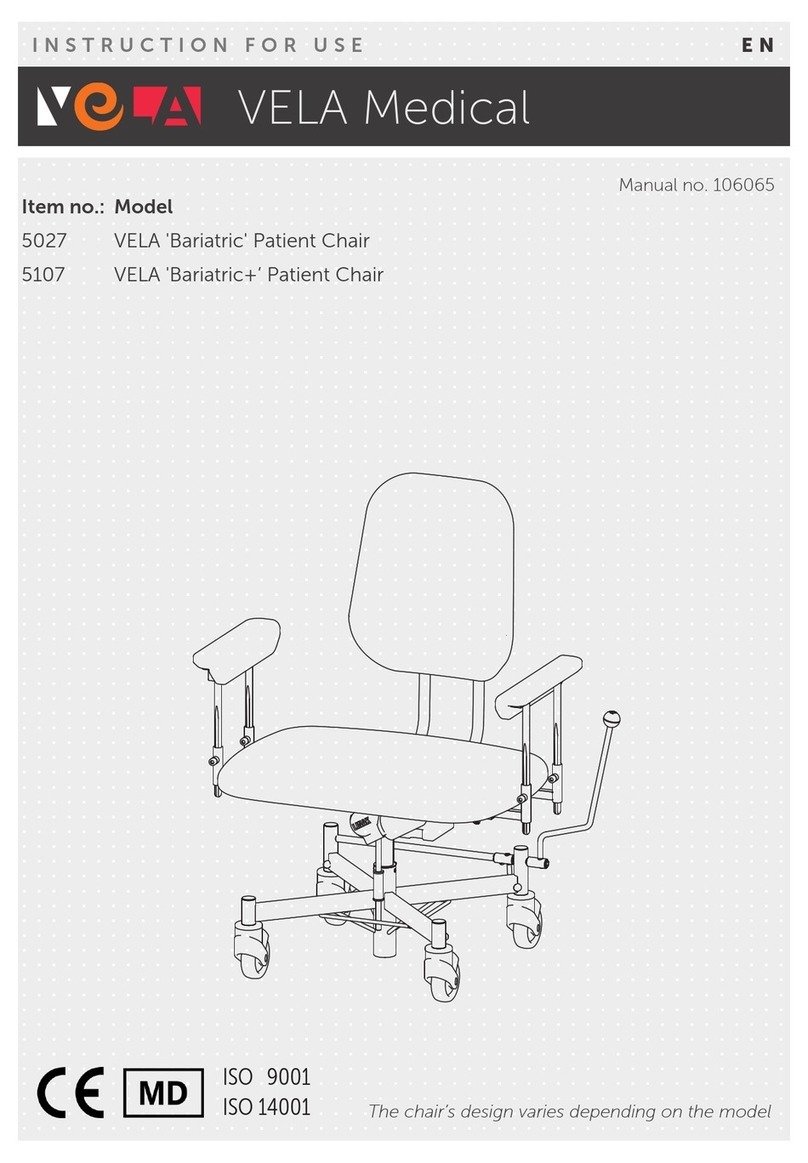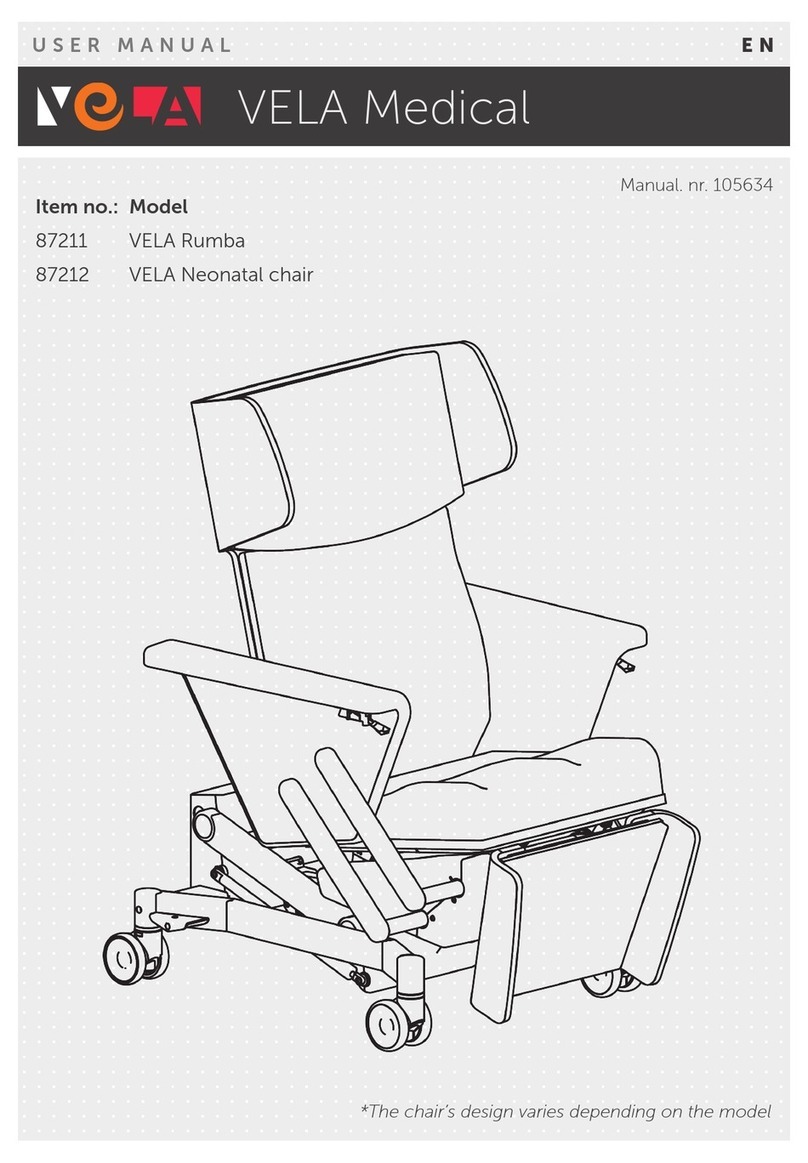
8
1.7.3. UPHOLSTERY
Magic Premium by Cotting Group:
Abrasion resistance: About 500,000
Martindale, ISO 5470-2
Biocompatibility: ISO 10993-10:2014
Lightfastness: Light ≥ 6; perspiration
(ISO 11641): Class 4
Surface resistance: Blood/urine (EN
12720)
Flame protection: BS 5852 crib 5, B2
(DIN 4102), EN 1021.1-2, IMO A652,
temperature: -40°C to + 70°C
Maintenance: Regularly wipe down
the PU textile with clean, warm water
and pH-neutral soap. Use a clean,
white, soft cloth or sponge. Wipe
down with a clean, wrung-out cloth.
Vacuum with a soft brush.
Stains: Remove immediately using
an absorbent cloth.
Disinfection: The textile must be
cleaned prior to disinfection.
The following cleaning products
can be used: 70% Ethanol (hospital
disinfectant) ISO 1164, or chlorine-
based products with 5,000 ppm
active chlorine, such as Actichlor
Plus. We advise following the
instructions on the packaging.
After cleaning/disinfection, the chair
must be wiped down several times
with a clean, wrung-out cloth.
1.8. RECYCLING AND DISPOSAL
This product contains recyclable
materials. For this reason, the product
must be disposed of in accordance
with local legislation and not with
regular household items.
Correct disposal and recycling
reduce the negative impact on the
environment and human beings.
Note: Electrical and electronic
equipment as well as batteries
contain materials, components,
and elements that can be harmful to
human health and the environment
if not handled correctly.
Electrical and electronic equipment,
as well as batteries, are marked
with a symbol to show they must be
disposed of independently and not
with unsorted household waste.
It is important to take your used
batteries to the established venues
to ensure they are reused in
accordance with legislation and do
not cause unnecessary harm to the
environment.






























